Energy Crisis: Definition and Causes
Energy crisis
An energy crisis is a society-wide economic problem caused by a constricted supply of energy, leading to diminished availability and increased price to consumers.
The energy crisis is the concern that the world’s demands on the limited natural resources that are used to power industrial society are diminishing as the demand rises. These natural resources are in limited supply. While they do occur naturally, it can take hundreds of thousands of years to replenish the stores. Governments and concerned individuals are working to make the use of renewable resources a priority, and to lessen the irresponsible use of natural supplies through increased conservation.
Since the mid-1960s, the world has faced numerous energy crises. Faced with the eventual end of carbon-based fuels like oil and gas, oil exporters and importers should work together to find a solution. In this lesson, we will look at what an energy crisis is and explore conservation and innovative ideas that might provide nearly inexhaustible energy.
Major Causes are :
- Limited oil resources which are being exploited are controlled by a few countries.
- Prolonged drought which lowers production of Hydro Electric Power as a result of less water hence calling for more demand on petroleum.
- Artificial shortages may be created by the oil-producing countries by withholding the oil.
- Rapid depletion of oil reserves.
- Political disagreement leading to shortage of oil due to delays at border points.
- Inadequate alternative sources of energy that can fit the position of oil causes over reliance on oil and oil products.
Briefly description of Causes of the Energy Crisis
It would be easy to point a finger at one practice or industry and lay the blame for the entire energy crisis at their door, but that would be a very naive and unrealistic interpretation of the cause of the crisis.
Over-consumption : The energy crisis is a result of many different strains on our natural resources, not just one. There is a strain on fossil fuels such as oil, gas and coal due to over-consumption – which then in turn can put a strain on our water and oxygen resources by causing pollution.
Overpopulation: Another cause of the crisis has been the steady increase in the world’s population and its demands for fuel and products. No matter what type of food or products you choose to use – from fair trade and organic to those made from petroleum products in a sweatshop – not one of them is made or transported without a significant drain on our energy resources.
Poor Infrastructure: Aging infrastructure of power generating equipment is yet another reason for energy shortage. Most of the energy producing firms keep on using outdated equipment that restricts the production of energy. It is the responsibility of utilities to keep on upgrading the infrastructure and set a high standard of performance.
Unexplored Renewable Energy Options: Renewable energy still remains unused is most of the countries. Most of the energy comes from non-renewable sources like coal. It still remains the top choice to produce energy. Unless we give renewable energy a serious thought, the problem of energy crisis cannot be solved. Renewable energy sources can reduce our dependance on fossil fuels and also helps to reduce greenhouse gas emissions.
Delay in Commissioning of Power Plants: In few countries, there is a significant delay in commissioning of new power plants that can fill the gap between demand and supply of energy. The result is that old plants come under huge stress to meet the daily demand for power. When supply doesn’t matches demand, it results in load shedding and breakdown.
Wastage of Energy: In most parts of the world, people do not realize the importance of conserving energy. It is only limited to books, internet, newspaper ads, lip service and seminars. Unless we give it a serious thought, things are not going to change anytime sooner. Simple things like switching off fans and lights when not in use, using maximum daylight, walking instead of driving for short distances, using CFL instead of traditional bulbs, proper insulation for leakage of energy can go a long way in saving energy. Read here about 151 ways of saving energy.
Poor Distribution System: Frequent tripping and breakdown are result of a poor distribution system.
Major Accidents and Natural Calamities: Major accidents like pipeline burst and natural calamities like eruption of volcanoes, floods, earthquakes can also cause interruptions to energy supplies. The huge gap between supply and demand of energy can raise the price of essential items which can give rise to inflation.
Wars and Attacks: Wars between countries can also hamper supply of energy specially if it happens in Middle East countries like Saudi Arabia, Iraq, Iran, Kuwait, UAE or Qatar. That’s what happened during 1990 Gulf war when price of oil reached its peak causing global shortages and created major problem for energy consumers.
Miscellaneous Factors: Tax hikes, strikes, military coup, political events, severe hot summers or cold winters can cause sudden increase in demand of energy and can choke supply. A strike by unions in an oil producing firm can definitely cause an energy crisis.
Information Source:
- www.conserve-energy-future.com

Exchange Stabilization Fund (ESF)
Income elasticity of demand, expense definition, disadvantages of nudge theory, session jam, business intelligence (bi), constant voltage source, sample recommendation letter for an appropriate school uniform, paragraph on making a class forum, lecture on power and politics, latest post, cultural practice, auditory illusions, increases in rainfall are hidden by air pollution, hearing soothing words in your sleep decreases your heart rate, pertussis toxin (pt), cholera toxin.
Thank you for visiting nature.com. You are using a browser version with limited support for CSS. To obtain the best experience, we recommend you use a more up to date browser (or turn off compatibility mode in Internet Explorer). In the meantime, to ensure continued support, we are displaying the site without styles and JavaScript.
- View all journals
- Explore content
- About the journal
- Publish with us
- Sign up for alerts
- 16 December 2022
Energy crisis: five questions that must be answered in 2023
- Andreas Goldthau 0 &
- Simone Tagliapietra 1
Andreas Goldthau is a professor at the Willy Brandt School of Public Policy, University of Erfurt, Germany, and research group lead at the Institute for Advanced Sustainability Studies, Potsdam, Germany.
You can also search for this author in PubMed Google Scholar
Simone Tagliapietra is a senior fellow at Bruegel, Brussels, Belgium, and a professor of energy, climate and environmental policy at the Catholic University of Sacred Heart, Milan, Italy.
A rig operator guides a drilling pipe at a gas production facility near Lensk, Russia. Credit: Andrey Rudakov/Bloomberg via Getty
Energy markets have been on a roller-coaster ride this year. In response to Russia’s invasion of Ukraine, Western countries imposed financial sanctions on Russia and embargoed its oil exports. Russia cut its gas supplies to Europe in retaliation. Major importers such as Germany had to slash their energy use and look elsewhere for supplies. Low- and middle-income nations struggled to access affordable energy. Countries including Pakistan, Bangladesh and Sri Lanka faced blackouts; fuel price hikes spilled over into food markets.
Access options
Access Nature and 54 other Nature Portfolio journals
Get Nature+, our best-value online-access subscription
24,99 € / 30 days
cancel any time
Subscribe to this journal
Receive 51 print issues and online access
185,98 € per year
only 3,65 € per issue
Rent or buy this article
Prices vary by article type
Prices may be subject to local taxes which are calculated during checkout
Nature 612 , 627-630 (2022)
doi: https://doi.org/10.1038/d41586-022-04467-w
BloombergNEF. Mobilizing Capital Into Emerging Markets and Developing Economies (BloombergNEF, 2022).
Google Scholar
International Energy Agency. World Energy Investment 2022 (IEA, 2022).
Eicke, L. & Goldthau, A. Environ. Sci. Policy 124 , 370–379 (2021).
Article Google Scholar
Global Climate Alliance Collaborative. Global Climate Alliance For Accelerated Climate Action (Multinational Development Policy Dialogue Brussels & Konrad Adenauer Foundation, 2022).
Hall, P. & Soskice, D. (eds) Varieties of Capitalism (Oxford Univ. Press, 2001).
Tagliapietra, S. & Wolff, G. B. Nature 591 , 526–528 (2021).
Article PubMed Google Scholar
Download references
Reprints and permissions
Competing Interests
The authors declare no competing interests.
Related Articles

- Climate change

A better way to charge a quantum battery
Research Highlight 08 MAR 24

The world must rethink plans for ageing oil and gas platforms
Comment 06 MAR 24
Triple win: solar farms in deserts can boost power, incomes and ecosystems
Correspondence 20 FEB 24

Climate models can’t explain 2023’s huge heat anomaly — we could be in uncharted territory
World View 19 MAR 24

Ditching ‘Anthropocene’: why ecologists say the term still matters
News 14 MAR 24

Drought triggers and sustains overnight fires in North America
Article 13 MAR 24
‘Global swimways’ on free-flowing rivers will protect key migratory fish species
Correspondence 19 MAR 24

How to stop ‘passing the harasser’: universities urged to join information-sharing scheme
News 18 MAR 24

Take these steps to accelerate the path to gender equity in health sciences
Nature Index 13 MAR 24
Assistant Professor in Ecological Oceanography
The Marine Science Program in the Biological and Environmental Science and Engineering (BESE) Division at King Abdullah University of Science and ...
Saudi Arabia (SA)
King Abdullah University of Science and Technology
The UBC Department of Physics and Astronomy, invites applications for a three-year lecturer position in physics at the UBC campus in Vancouver.
Greater Vancouver, British Columbia (CA)
Department of Physics and Astronomy - University of British Columbia
UAB Postdoc- Department of Genetics, Dr. Lizhong Wang's Lab The positions of Postdoc are available in Dr. Lizhong Wang’s laboratory within the De...
Birmingham, Alabama (US)
Postdoctoral Scholar - Psychiatry
Memphis, Tennessee
The University of Tennessee Health Science Center (UTHSC)
Postdoctoral Scholar - Department of Physiology
Sign up for the Nature Briefing newsletter — what matters in science, free to your inbox daily.
Quick links
- Explore articles by subject
- Guide to authors
- Editorial policies
Create an account
Create a free IEA account to download our reports or subcribe to a paid service.

How the energy crisis started, how global energy markets are impacting our daily life, and what governments are doing about it
Global Energy Crisis
- English English
What is the energy crisis?
Record prices, fuel shortages, rising poverty, slowing economies: the first energy crisis that's truly global.
Energy markets began to tighten in 2021 because of a variety of factors, including the extraordinarily rapid economic rebound following the pandemic. But the situation escalated dramatically into a full-blown global energy crisis following Russia’s invasion of Ukraine in February 2022. The price of natural gas reached record highs, and as a result so did electricity in some markets. Oil prices hit their highest level since 2008.
Higher energy prices have contributed to painfully high inflation, pushed families into poverty, forced some factories to curtail output or even shut down, and slowed economic growth to the point that some countries are heading towards severe recession. Europe, whose gas supply is uniquely vulnerable because of its historic reliance on Russia, could face gas rationing this winter, while many emerging economies are seeing sharply higher energy import bills and fuel shortages. While today’s energy crisis shares some parallels with the oil shocks of the 1970s, there are important differences. Today’s crisis involves all fossil fuels, while the 1970s price shocks were largely limited to oil at a time when the global economy was much more dependent on oil, and less dependent on gas. The entire word economy is much more interlinked than it was 50 years ago, magnifying the impact. That’s why we can refer to this as the first truly global energy crisis.
Some gas-intensive manufacturing plants in Europe have curtailed output because they can’t afford to keep operating, while in China some have simply had their power supply cut. In emerging and developing economies, where the share of household budgets spent on energy and food is already large, higher energy bills have increased extreme poverty and set back progress towards achieving universal and affordable energy access. Even in advanced economies, rising prices have impacted vulnerable households and caused significant economic, social and political strains.
Climate policies have been blamed in some quarters for contributing to the recent run-up in energy prices, but there is no evidence. In fact, a greater supply of clean energy sources and technologies would have protected consumers and mitigated some of the upward pressure on fuel prices.
Russia's invasion of Ukraine drove European and Asian gas prices to record highs
Evolution of key regional natural gas prices, june 2021-october 2022, what is causing it, disrupted supply chains, bad weather, low investment, and then came russia's invasion of ukraine.
Energy prices have been rising since 2021 because of the rapid economic recovery, weather conditions in various parts of the world, maintenance work that had been delayed by the pandemic, and earlier decisions by oil and gas companies and exporting countries to reduce investments. Russia began withholding gas supplies to Europe in 2021, months ahead of its invasion of Ukraine. All that led to already tight supplies. Russia’s attack on Ukraine greatly exacerbated the situation . The United States and the EU imposed a series of sanctions on Russia and many European countries declared their intention to phase out Russian gas imports completely. Meanwhile, Russia has increasingly curtailed or even turned off its export pipelines. Russia is by far the world’s largest exporter of fossil fuels, and a particularly important supplier to Europe. In 2021, a quarter of all energy consumed in the EU came from Russia. As Europe sought to replace Russian gas, it bid up prices of US, Australian and Qatari ship-borne liquefied natural gas (LNG), raising prices and diverting supply away from traditional LNG customers in Asia. Because gas frequently sets the price at which electricity is sold, power prices soared as well. Both LNG producers and importers are rushing to build new infrastructure to increase how much LNG can be traded internationally, but these costly projects take years to come online. Oil prices also initially soared as international trade routes were reconfigured after the United States, many European countries and some of their Asian allies said they would no longer buy Russian oil. Some shippers have declined to carry Russian oil because of sanctions and insurance risk. Many large oil producers were unable to boost supply to meet rising demand – even with the incentive of sky-high prices – because of a lack of investment in recent years. While prices have come down from their peaks, the outlook is uncertain with new rounds of European sanctions on Russia kicking in later this year.
What is being done?
Pandemic hangovers and rising interest rates limit public responses, while some countries turn to coal.
Some governments are looking to cushion the blow for customers and businesses, either through direct assistance, or by limiting prices for consumers and then paying energy providers the difference. But with inflation in many countries well above target and budget deficits already large because of emergency spending during the Covid-19 pandemic, the scope for cushioning the impact is more limited than in early 2020. Rising inflation has triggered increases in short-term interest rates in many countries, slowing down economic growth. Europeans have rushed to increase gas imports from alternative producers such as Algeria, Norway and Azerbaijan. Several countries have resumed or expanded the use of coal for power generation, and some are extending the lives of nuclear plants slated for de-commissioning. EU members have also introduced gas storage obligations, and agreed on voluntary targets to cut gas and electricity demand by 15% this winter through efficiency measures, greater use of renewables, and support for efficiency improvements. To ensure adequate oil supplies, the IEA and its members responded with the two largest ever releases of emergency oil stocks. With two decisions – on 1 March 2022 and 1 April – the IEA coordinated the release of some 182 million barrels of emergency oil from public stocks or obligated stocks held by industry. Some IEA member countries independently released additional public stocks, resulting in a total of over 240 million barrels being released between March and November 2022.
The IEA has also published action plans to cut oil use with immediate impact, as well as plans for how Europe can reduce its reliance on Russian gas and how common citizens can reduce their energy consumption . The invasion has sparked a reappraisal of energy policies and priorities, calling into question the viability of decades of infrastructure and investment decisions, and profoundly reorientating international energy trade. Gas had been expected to play a key role in many countries as a lower-emitting "bridge" between dirtier fossil fuels and renewable energies. But today’s crisis has called into question natural gas’ reliability.
The current crisis could accelerate the rollout of cleaner, sustainable renewable energy such as wind and solar, just as the 1970s oil shocks spurred major advances in energy efficiency, as well as in nuclear, solar and wind power. The crisis has also underscored the importance of investing in robust gas and power network infrastructure to better integrate regional markets. The EU’s RePowerEU, presented in May 2022 and the United States’ Inflation Reduction Act , passed in August 2022, both contain major initiatives to develop energy efficiency and promote renewable energies.
The global energy crisis can be a historic turning point
Energy saving tips
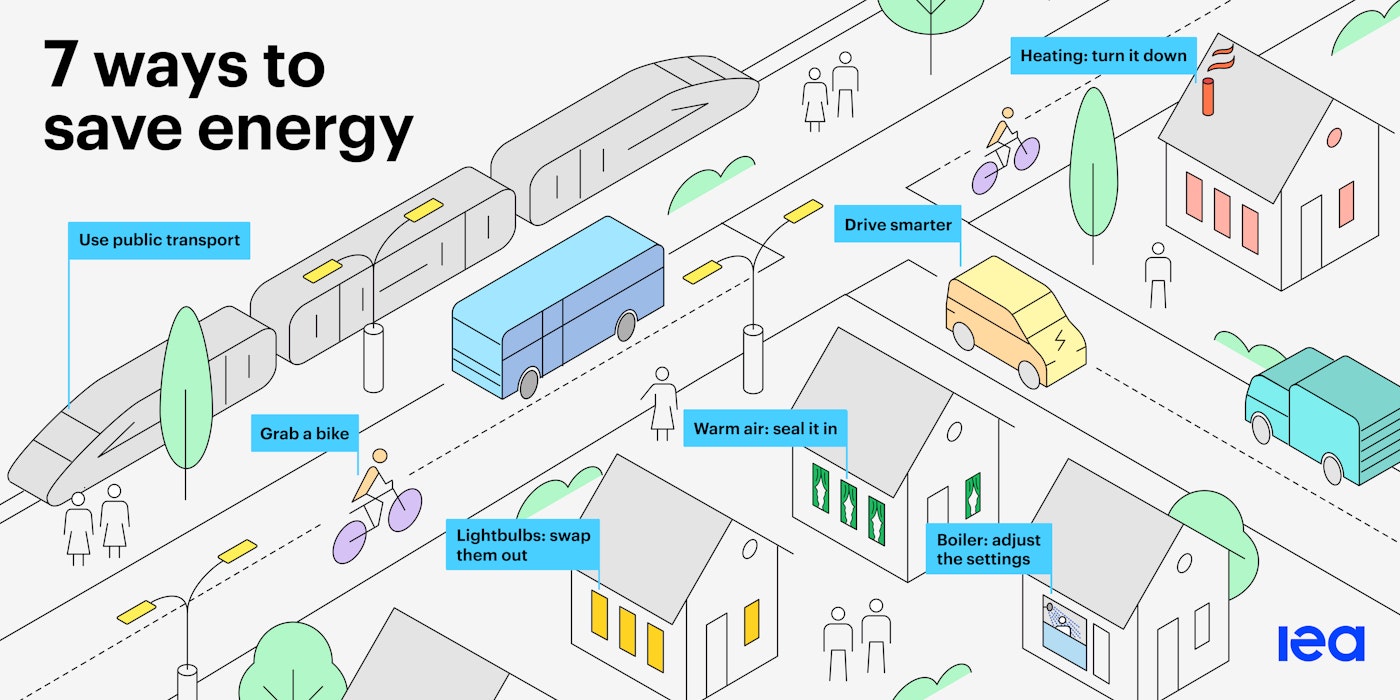
1. Heating: turn it down
Lower your thermostat by just 1°C to save around 7% of your heating energy and cut an average bill by EUR 50-70 a year. Always set your thermostat as low as feels comfortable, and wear warm clothes indoors. Use a programmable thermostat to set the temperature to 15°C while you sleep and 10°C when the house is unoccupied. This cuts up to 10% a year off heating bills. Try to only heat the room you’re in or the rooms you use regularly.
The same idea applies in hot weather. Turn off air-conditioning when you’re out. Set the overall temperature 1 °C warmer to cut bills by up to 10%. And only cool the room you’re in.
2. Boiler: adjust the settings
Default boiler settings are often higher than you need. Lower the hot water temperature to save 8% of your heating energy and cut EUR 100 off an average bill. You may have to have the plumber come once if you have a complex modern combi boiler and can’t figure out the manual. Make sure you follow local recommendations or consult your boiler manual. Swap a bath for a shower to spend less energy heating water. And if you already use a shower, take a shorter one. Hot water tanks and pipes should be insulated to stop heat escaping. Clean wood- and pellet-burning heaters regularly with a wire brush to keep them working efficiently.
3. Warm air: seal it in
Close windows and doors, insulate pipes and draught-proof around windows, chimneys and other gaps to keep the warm air inside. Unless your home is very new, you will lose heat through draughty doors and windows, gaps in the floor, or up the chimney. Draught-proof these gaps with sealant or weather stripping to save up to EUR 100 a year. Install tight-fitting curtains or shades on windows to retain even more heat. Close fireplace and chimney openings (unless a fire is burning) to stop warm air escaping straight up the chimney. And if you never use your fireplace, seal the chimney to stop heat escaping.
4. Lightbulbs: swap them out
Replace old lightbulbs with new LED ones, and only keep on the lights you need. LED bulbs are more efficient than incandescent and halogen lights, they burn out less frequently, and save around EUR 10 a year per bulb. Check the energy label when buying bulbs, and aim for A (the most efficient) rather than G (the least efficient). The simplest and easiest way to save energy is to turn lights off when you leave a room.
5. Grab a bike
Walking or cycling are great alternatives to driving for short journeys, and they help save money, cut emissions and reduce congestion. If you can, leave your car at home for shorter journeys; especially if it’s a larger car. Share your ride with neighbours, friends and colleagues to save energy and money. You’ll also see big savings and health benefits if you travel by bike. Many governments also offer incentives for electric bikes.
6. Use public transport
For longer distances where walking or cycling is impractical, public transport still reduces energy use, congestion and air pollution. If you’re going on a longer trip, consider leaving your car at home and taking the train. Buy a season ticket to save money over time. Your workplace or local government might also offer incentives for travel passes. Plan your trip in advance to save on tickets and find the best route.
7. Drive smarter
Optimise your driving style to reduce fuel consumption: drive smoothly and at lower speeds on motorways, close windows at high speeds and make sure your tires are properly inflated. Try to take routes that avoid heavy traffic and turn off the engine when you’re not moving. Drive 10 km/h slower on motorways to cut your fuel bill by around EUR 60 per year. Driving steadily between 50-90 km/h can also save fuel. When driving faster than 80 km/h, it’s more efficient to use A/C, rather than opening your windows. And service your engine regularly to maintain energy efficiency.
Analysis and forecast to 2026
Fuel report — December 2023
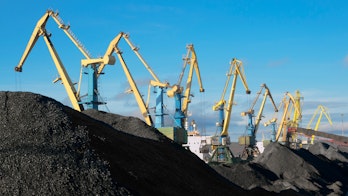
Europe’s energy crisis: Understanding the drivers of the fall in electricity demand
Commentary — 09 May 2023
Where things stand in the global energy crisis one year on
Commentary — 23 February 2023
The global energy crisis pushed fossil fuel consumption subsidies to an all-time high in 2022
Commentary — 16 February 2023
Fossil Fuels Consumption Subsidies 2022
Policy report — February 2023
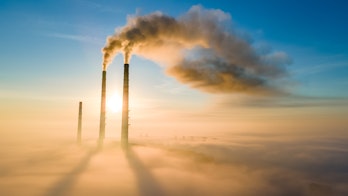
Background note on the natural gas supply-demand balance of the European Union in 2023
Report — February 2023
Analysis and forecast to 2025
Fuel report — December 2022
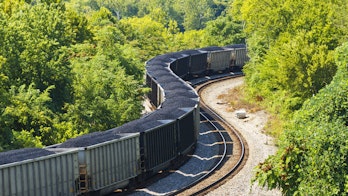
How to Avoid Gas Shortages in the European Union in 2023
A practical set of actions to close a potential supply-demand gap
Flagship report — December 2022
Subscription successful
Thank you for subscribing. You can unsubscribe at any time by clicking the link at the bottom of any IEA newsletter.

An official website of the United States government
Here’s how you know
Official websites use .gov A .gov website belongs to an official government organization in the United States.
Secure .gov websites use HTTPS A lock ( Lock A locked padlock ) or https:// means you’ve safely connected to the .gov website. Share sensitive information only on official, secure websites.
JavaScript appears to be disabled on this computer. Please click here to see any active alerts .
Climate Change Impacts on Energy
The U.S. energy system consists of all the infrastructure needed to collect, produce, distribute, store, and consume power for our homes, for our businesses, and while we are on the go. From manufacturing to agriculture , and health care to transportation , the nation depends on a stable energy supply.
Our energy system is vulnerable to a wide range of climate change impacts. These include rising temperatures and heat waves, cold and snow events, severe drought, intense rainfall, sea level rise, hurricanes, and wildfires. While these impacts differ from one region to another, they will continue to affect all areas of the country. 1 Moreover, impacts to one part of the energy system or in one region can affect other parts of the system or other areas.
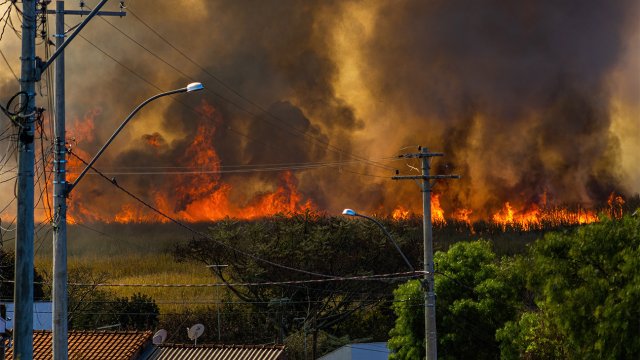
Wildfires. Warmer, drier conditions caused by climate change are expected to make wildfires more frequent and intense. When a tree came in contact with electrical distribution lines, it sparked the largest wildfire in California’s history, the 2021 Dixie Fire. 42
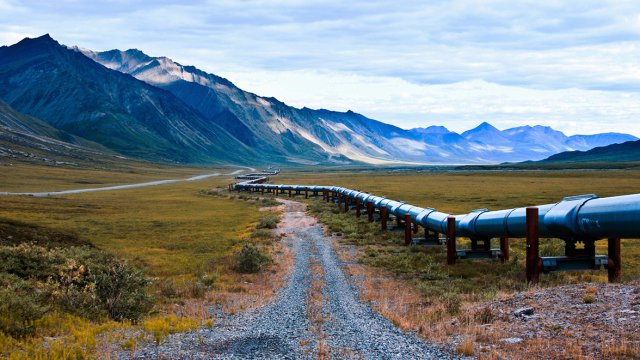
Damage to Alaska infrastructure. Sea level rise, melting sea ice, and thawing permafrost are all expected to damage oil and gas infrastructure in Alaska, affecting energy production. 43
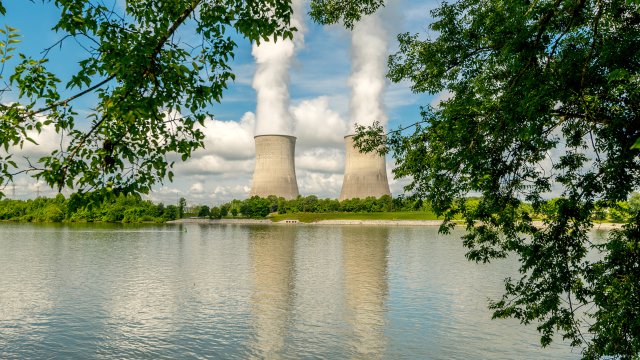
Nuclear energy impacts. Nuclear power accounts for about one-fifth of U.S. electricity production. 44 Many nuclear reactors use water from freshwater bodies or oceans to cool down. 45 Rising water and air temperatures have already forced some nuclear plants to temporarily close to lower the risk of overheating. 46

Reductions in hydropower. Drought, reduced mountain snowpack, and shifting snowmelt timing could affect hydropower energy production in the West, especially in summer, when demand is greatest. 47
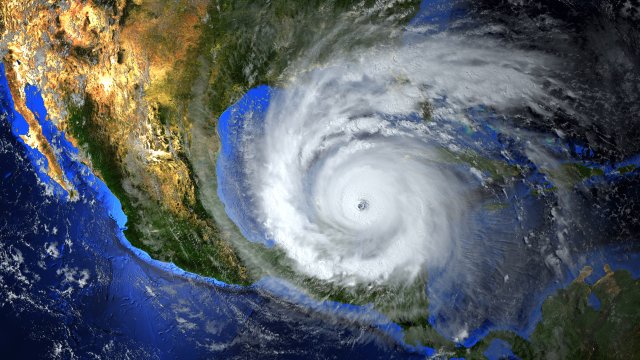
Hurricanes and extreme weather threats. Storm surge from hurricanes already threaten dozens of power plants and refineries on the Atlantic and Gulf Coasts. 48 Rising sea levels will expose even more facilities to risk during extreme weather events. 49
The Link Between Energy and Climate Change
The energy sector is the largest emitter of greenhouse gases into the atmosphere, contributing to climate change. In turn, changes in climate can disrupt energy networks themselves, stress infrastructure, and pose safety risks to people. Read more about greenhouse gas emissions on the Basics of Climate Change page.
In addition, energy interacts with and depends on other sectors of the economy, such as water resources and transportation . Therefore, climate impacts on these sectors can affect the energy system.
Businesses, governments, and others are taking many actions to increase the resiliency of the energy system to climate change. For example, many states are upgrading and protecting their energy infrastructure from extreme weather. 2 Governments and businesses are sharing information with each other through private/public partnerships. Companies and researchers are developing and installing innovative and renewable technologies (such as wind and solar) that help reduce air pollution and greenhouse gas emissions. These actions not only help address vulnerabilities to the energy system, but also reduce the emissions that are making climate change worse.
Learn more about climate impacts on the energy sector :

Top Climate Impacts on Energy
Energy and the economy, environmental justice and equity, what we can do, related resources.
Climate change may affect the energy sector at both local and regional scales. Four key impacts are described in this section.
1. Disruptions to Energy Supply
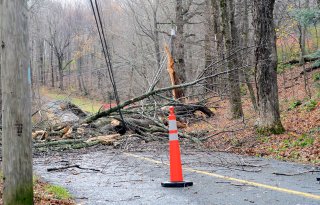
Extreme weather and natural disasters pose significant risks to the U.S. energy supply in all regions of the country. 3 Energy systems on both the Gulf and East Coasts face more risk of damage from flooding due to hurricanes and sea level rise. 4 More frequent and intense precipitation events are expected to increase the risk of flooding on infrastructure in the Northeast and the Midwest. 5 In Arctic regions like Alaska, thawing permafrost causes land to sink and compromise fuel pipelines and other energy infrastructure. 6
Overall, the climate is warming, and the atmosphere’s increasing capacity to hold moisture can lead to longer periods without rainfall. The warmth and variability in precipitation can lead to declining snowpack, shifts in snowmelt, and extended droughts—all of which affect water supplies needed for energy systems. For example, most U.S. power plants depend on rivers or lakes for cooling. 7 Petroleum, natural gas, and biofuels production and refining also require a steady supply of water. 8 Water shortages have already affected hydropower production, especially in the West. 9 Without enough water, affected systems need to find new water sources or scale back their operations.
2. Interruptions to Electricity Transmission
Climate change threatens the ways in which power reaches our homes and businesses. 10 For example, transmission lines are prone to damage during extreme weather. Snow and ice, wildfires, and extreme wind can damage above-ground powerlines and transmission towers. 11 Flooding can affect underground powerlines and damage roads, railroads, pipelines, and storage facilities. 12 Near the coast, storm surge can destroy petroleum storage tanks and wash out roads and railways. 13
Warmer temperatures, especially hot summer temperatures, can affect power transmission. When temperatures rise, the carrying capacity of transmission lines decreases. 14 Summer months also present more wildfire risks, especially in the Southwest. 15 Wildfires can disrupt energy networks significantly when they affect transmission towers and powerlines. 16 , 17 In some areas, faulty or fallen powerlines (or lines that come in contact with trees) can start wildfires. This risk is why some utilities shut down powerlines when high winds are forecast. 18
3. Strain on the Energy System
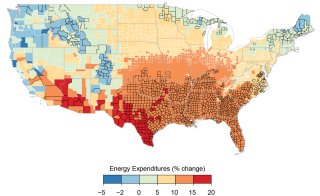
Temperatures are rising in all regions of the United States. 19 As the climate warms, Americans are expected to use more energy, mostly electricity, for cooling. 20 This higher demand will also increase the chance of blackouts or other power disruptions. 21
A warming climate also means that Americans are expected to use less energy for heating their homes in the winter. 22 However, increased summer demands for cooling are expected to outweigh any energy-use reductions from lower heating needs. 23
4. Increased Air Pollution and Climate Change
As the demand for cooling increases across the nation, more electricity must be produced to meet this demand. Increasing energy production is likely to increase emissions of certain air pollutants and greenhouse gases that contribute to climate change. 24 , 25
For more specific examples of climate change impacts in your region, please see the National Climate Assessment .
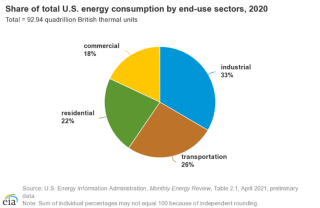
An affordable and reliable energy supply is critical to the country’s economy. 26 In 2020, the U.S. produced nearly 96 quadrillion British thermal units (Btu) of energy and consumed nearly 93 quadrillion Btu. 27 Energy produced in the United States, but not consumed here, is exported to other countries. Fossil fuels (petroleum, coal, and natural gas) accounted for nearly 80% of U.S. energy production—both electricity generation and energy consumed directly—in 2020. The primary consumer sectors of energy in the United States are the industrial, transportation, commercial, and residential sectors.
The energy system is an important source of employment for Americans, providing jobs for about 5.2 million people. 28 These jobs support power generation and transmission, fuel extraction and processing, and renewable energy and energy-efficiency installations and sales.
U.S. energy exports also contribute to the economy. In 2020, U.S. energy exports exceeded total energy imports, as the United States was a net exporter of petroleum products, natural gas, and coal. 29 Crude oil was the only major fuel type for which the United States was a net importer. 30
Major disturbances to the energy supply, such as power outages or fuel shortages, harm the economy. 31 For example, energy disruptions from extreme weather damage to energy infrastructure have cost billions of dollars. 32 The nation’s energy system is also aging, with many components not designed to withstand the extreme weather conditions projected for this century. 33

Some communities have been historically overburdened by pollution. Low-income people, people of color, and linguistically isolated communities are more likely than the national average to live near power plants that burn fossil fuels . 35 This means they can be exposed to air pollutants that cause or contribute to health issues, such as respiratory and heart diseases. 36 As the climate changes and energy demand grows, communities may face increased levels of these emissions and associated risks.
Lower-income communities also carry a higher energy burden than those with higher incomes. On average, low-income households spend 8.6% of their income on energy expenses. 37 In comparison, non-low-income households spend 3%. 38 Many factors contribute to this burden. For example, low-income households may live in housing without insulation or with outdated appliances. 39 This energy burden may increase as the climate changes and energy demand goes up.
In addition, low-income communities often face barriers to accessing clean technologies that make energy more affordable. For instance, as of 2018, less than half of community-scale solar projects included households with lower incomes. 41

We can reduce climate change’s impact on the energy sector in many ways, including the following:
- Save energy. Individuals and companies can take many actions to save energy. For example, look for ENERGY STAR certified products , such as appliances and electronics. Some utility companies even offer federal tax credits .
- Expand access to clean technologies. Government and industry leaders can help expand access to renewable energy programs , such as wind and solar power, so that all communities benefit. This transition will help reduce the emissions contributing to climate change.
- Modernize infrastructure. Utilities and government agencies can update energy infrastructure, such as leak-prone pipelines and aging power lines . These actions increase resiliency, improve safety, and protect public health.
- Ensure energy equity. Policymakers, industry leaders, and communities can take steps to improve energy affordability and ensure all people have a voice in energy planning . They can also better ensure that the benefits from energy investment reach typically underserved communities.
- Make infrastructure local. Utilities, urban planners, and government agencies can use microgrids . These systems and other decentralized energy infrastructure help make electricity supplies more resilient to extreme weather.
See additional actions you can take, as well as steps that companies can take, on EPA’s What You Can Do About Climate Change page.
- Fifth National Climate Assessment , Chapter 5: “Energy Supply, Delivery, and Demand.”
- National Renewable Energy Laboratory . Supports energy efficiency and sustainability efforts and provides information on how to optimize energy systems.
- Low-Income Energy Affordability Data (LEAD) Tool . Helps states and communities create better energy strategies by improving their understanding of housing and energy characteristics for low- and moderate-income households.
- U.S. Energy Information Administration . Provides impartial statistics and analysis of energy information and increases public understanding of how energy systems interact with the economy and the environment.
- ENERGY STAR . Provides information to individuals and businesses about energy-efficient products and services.
- Energy and the Environment . Provides information and EPA resources on clean energy programs and energy efficiency. You can also measure the impact of your energy use and learn how to reduce it.
1 Zamuda, C., et al. (2018). Ch. 4: Energy supply, delivery, and demand . In: Impacts, risks, and adaptation in the United States: Fourth national climate assessment, volume II . U.S. Global Change Research Program, Washington, DC, p. 178.
2 Zamuda, C., et al. (2018). Ch. 4: Energy supply, delivery, and demand . In: Impacts, risks, and adaptation in the United States: Fourth national climate assessment, volume II . U.S. Global Change Research Program, Washington, DC, p. 186.
3 DOE. (2015). Map: How climate change threatens America’s energy infrastructure in every region . Retrieved 5/11/2022.
4 Zamuda, C., et al. (2018). Ch. 4: Energy supply, delivery, and demand . In: Impacts, risks, and adaptation in the United States: Fourth national climate assessment, volume II . U.S. Global Change Research Program, Washington, DC, p. 181.
5 Zamuda, C., et al. (2018). Ch. 4: Energy supply, delivery, and demand . In: Impacts, risks, and adaptation in the United States: Fourth national climate assessment, volume II . U.S. Global Change Research Program, Washington, DC, p. 178.
6 Zamuda, C., et al. (2018). Ch. 4: Energy supply, delivery, and demand . In: Impacts, risks, and adaptation in the United States: Fourth national climate assessment, volume II . U.S. Global Change Research Program, Washington, DC, p. 180.
7 Zamuda, C., et al. (2018). Ch. 4: Energy supply, delivery, and demand . In: Impacts, risks, and adaptation in the United States: Fourth national climate assessment, volume II . U.S. Global Change Research Program, Washington, DC, p. 182.
8 Zamuda, C., et al. (2018). Ch. 4: Energy supply, delivery, and demand . In: Impacts, risks, and adaptation in the United States: Fourth national climate assessment, volume II . U.S. Global Change Research Program, Washington, DC, p. 182.
9 Zamuda, C., et al. (2018). Ch. 4: Energy supply, delivery, and demand . In: Impacts, risks, and adaptation in the United States: Fourth national climate assessment, volume II . U.S. Global Change Research Program, Washington, DC, p. 182.
10 Zamuda, C., et al. (2018). Ch. 4: Energy supply, delivery, and demand . In: Impacts, risks, and adaptation in the United States: Fourth national climate assessment, volume II . U.S. Global Change Research Program, Washington, DC, p. 180.
11 Zamuda, C., et al. (2018). Ch. 4: Energy supply, delivery, and demand . In: Impacts, risks, and adaptation in the United States: Fourth national climate assessment, volume II . U.S. Global Change Research Program, Washington, DC, p. 180.
12 Zamuda, C., et al. (2018). Ch. 4: Energy supply, delivery, and demand . In: Impacts, risks, and adaptation in the United States: Fourth national climate assessment, volume II . U.S. Global Change Research Program, Washington, DC, p. 179.
13 Zamuda, C., et al. (2018). Ch. 4: Energy supply, delivery, and demand . In: Impacts, risks, and adaptation in the United States: Fourth national climate assessment, volume II . U.S. Global Change Research Program, Washington, DC, p. 180.
14 Sathaye, J., et al. (2011). Estimating risk to California energy infrastructure from projected climate change . CEC Publication CEC500-2012-057.
15 Zamuda, C., et al. (2018). Ch. 4: Energy supply, delivery, and demand . In: Impacts, risks, and adaptation in the United States: Fourth national climate assessment, volume II . U.S. Global Change Research Program, Washington, DC, p. 176.
16 Lall, U., et al. (2018). Ch. 3: Water . In: Impacts, risks, and adaptation in the United States: Fourth national climate assessment, volume II . U.S. Global Change Research Program, Washington, DC, pp. 153–154.
17 Zamuda, C., et al. (2018). Ch. 4: Energy supply, delivery, and demand . In: Impacts, risks, and adaptation in the United States: Fourth national climate assessment, volume II . U.S. Global Change Research Program, Washington, DC, p. 177.
18 Anaya-Morga, L. (2021). PG&E warns of another power shut-off affecting up to 29,000 customers; Santa Ana winds continue to pick up . Los Angeles Times . Retrieved 5/11/2022.
19 Zamuda, C., et al. (2018). Ch. 4: Energy supply, delivery, and demand . In: Impacts, risks, and adaptation in the United States: Fourth national climate assessment, volume II . U.S. Global Change Research Program, Washington, DC, p. 178.
20 Zamuda, C., et al. (2018). Ch. 4: Energy supply, delivery, and demand . In: Impacts, risks, and adaptation in the United States: Fourth national climate assessment, volume II . U.S. Global Change Research Program, Washington, DC, p. 178.
21 Zamuda, C., et al. (2018). Ch. 4: Energy supply, delivery, and demand . In: Impacts, risks, and adaptation in the United States: Fourth national climate assessment, volume II . U.S. Global Change Research Program, Washington, DC, p. 181.
22 Zamuda, C., et al. (2018). Ch. 4: Energy supply, delivery, and demand . In: Impacts, risks, and adaptation in the United States: Fourth national climate assessment, volume II . U.S. Global Change Research Program, Washington, DC, p. 181.
23 Zamuda, C., et al. (2018). Ch. 4: Energy supply, delivery, and demand . In: Impacts, risks, and adaptation in the United States: Fourth national climate assessment, volume II . U.S. Global Change Research Program, Washington, DC, p. 181.
24 Zamuda, C., et al. (2018). Ch. 4: Energy supply, delivery, and demand . In: Impacts, risks, and adaptation in the United States: Fourth national climate assessment, volume II . U.S. Global Change Research Program, Washington, DC, p. 181.
25 Nolte, C., et al. (2018). Ch. 13: Air quality . In: Impacts, risks, and adaptation in the United States: Fourth national climate assessment, volume II . U.S. Global Change Research Program, Washington, DC, p. 514.
26 Zamuda, C., et al. (2018). Ch. 4: Energy supply, delivery, and demand . In: Impacts, risks, and adaptation in the United States: Fourth national climate assessment, volume II . U.S. Global Change Research Program, Washington, DC, p. 178.
27 U.S. Energy Information Administration (EIA). (2021). U.S. energy facts explained . Retrieved 3/2/2022.
28 U.S. Department of Energy (DOE). (2022). United States energy & employment report 2021: Executive summary . Department of Energy Office of Policy, Office of Energy Jobs, p. vi.
29 U.S. Energy Information Administration (EIA). (2021). U.S. energy facts explained . Retrieved 3/2/2022.
30 U.S. Energy Information Administration (EIA). (2021). U.S. energy facts explained . Retrieved 3/2/2022.
31 Zamuda, C., et al. (2018). Ch. 4: Energy supply, delivery, and demand . In: Impacts, risks, and adaptation in the United States: Fourth national climate assessment, volume II . U.S. Global Change Research Program, Washington, DC, p. 185.
32 Zamuda, C., et al. (2018). Ch. 4: Energy supply, delivery, and demand . In: Impacts, risks, and adaptation in the United States: Fourth national climate assessment, volume II . U.S. Global Change Research Program, Washington, DC, p. 185.
33 Zamuda, C., et al. (2018). Ch. 4: Energy supply, delivery, and demand . In: Impacts, risks, and adaptation in the United States: Fourth national climate assessment, volume II . U.S. Global Change Research Program, Washington, DC, p. 185.
34 U.S. Energy Information Administration (EIA). (2021). U.S. energy facts explained . Retrieved 3/2/2022.
35 EPA. (2022). Power plants and neighboring communities . Retrieved 3/2/2022.
36 Nolte, C., et al. (2018). Ch. 13: Air quality . In: Impacts, risks, and adaptation in the United States: Fourth national climate assessment, volume II . U.S. Global Change Research Program, Washington, DC, p. 514.
37 Office of Energy Efficiency & Renewable Energy. Low-income community energy solutions . Retrieved 3/2/2022.
38 Office of Energy Efficiency & Renewable Energy. Low-income community energy solutions . Retrieved 3/2/2022.
39 Office of Energy Efficiency & Renewable Energy. Low-income community energy solutions . Retrieved 3/2/2022.
40 EIA. (2015). One in three U.S. households faced challenges in paying energy bills in 2015 . Retrieved 3/2/2022.
41 National Renewable Energy Laboratory (NREL). (2021). NREL draws on experience to expand equitable energy access to state, local, and tribal communities . Retrieved 5/11/2022.
42 California Department of Forestry and Fire Protection. (2022). CAL FIRE investigators determine cause of the Dixie Fire . Retrieved 5/11/2022.
43 Zamuda, C., et al. (2018). Ch. 4: Energy supply, delivery, and demand . In: Impacts, risks, and adaptation in the United States: Fourth national climate assessment, volume II . U.S. Global Change Research Program, Washington, DC, p. 178.
44 DOE. (2021). Nuclear 101: How does a nuclear reactor work? Retrieved 5/11/2022.
45 DOE. (2021). Nuclear 101: How does a nuclear reactor work? Retrieved 5/11/2022.
46 DOE. (2013). Climate change: Effects on our energy . Retrieved 5/11/2022.
47 Zamuda, C., et al. (2018). Ch. 4: Energy supply, delivery, and demand . In: Impacts, risks, and adaptation in the United States: Fourth national climate assessment, volume II . U.S. Global Change Research Program, Washington, DC, p. 178.
48 Zamuda, C., et al. (2018). Ch. 4: Energy supply, delivery, and demand . In: Impacts, risks, and adaptation in the United States: Fourth national climate assessment, volume II . U.S. Global Change Research Program, Washington, DC, p. 180.
49 Zamuda, C., et al. (2018). Ch. 4: Energy supply, delivery, and demand . In: Impacts, risks, and adaptation in the United States: Fourth national climate assessment, volume II . U.S. Global Change Research Program, Washington, DC, p. 181.
- Climate Change Impacts Home
- Agriculture and Food Supply
- Air Quality
- Built Environment
- Freshwater Resources
- Ocean and Marine Resources
- Transportation
- Human Health
- State and Regional Impacts
- Climate Equity
Topics we focus on

Solutions to the energy crisis
How to achieve sustainable energy.
Identify the causes and effects of the energy crisis, but also the solutions to bring it to an end and how you can contribute.

01. Solutions
02. Definition
04. Effects
05. Prevention
Over the last two centuries, energy needs have skyrocketed dramatically, especially because of the transportation and industry sectors. However, fossil fuel are polluting and their reserves are limited.
We know today that these resources are close to exhaustion and our societies are facing a major challenge: the energy crisis.
Energy crisis solutions
The Solar Impulse Label is granted to innovative solutions to energy crisis that meet high standards of sustainability and profitability.
Each solution goes through a strict assessment process performed by independent experts.

ISOVER bio-based glass wool insulation
A glasswool-based thermal and acoustic insulant for housing and buildings
- Buildings & Shelters

Dynamic Cooling Management System
Dynamic cooling management system for data centers

Clean Cooling Solutions
Highly efficient, clean and innovative chillers based on magnetocaloric effect for cooling purposes
- Industry & Consumer Goods

Solar-DC Inverterless Controller
World’s first dual input and output solar backup system with ac-dc output

Solar Cloth thin film photovoltaic panel
Ultra-flexible, thin-film (CIGS) and light solar panels relevant for tents, trucks, drones, airships...

Active magnetic bearings
Active magnetic bearing system for the high-speed machinery sector and industrial original equipment manufacturers

Aquilon CO2 CRAC Unit
An energy efficient data center cooling unit using carbon dioxide as refrigerant
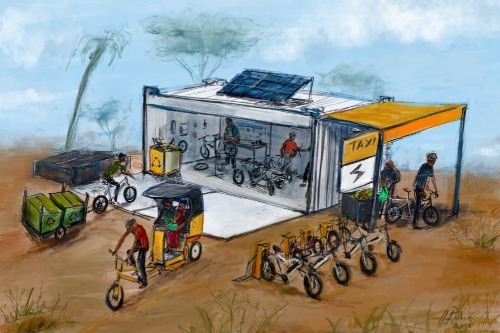
EBIKES4AFRICA
A solution to urban mobility challenges in africa
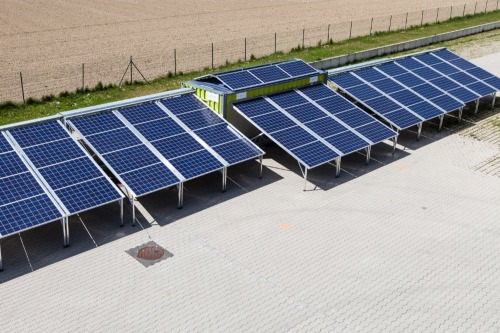
Mobil-Watt®
A mobile solar power system for off-grid areas

A technology that transforms led lightnings into communication networks
- Infrastructures

HP2 steam generation
A high performance integrated steam generator to prepare, condition and combust biomass
- Waste & Pollution

Affordable, compressed air and thermal energy storage at half the cost of lithium-ion
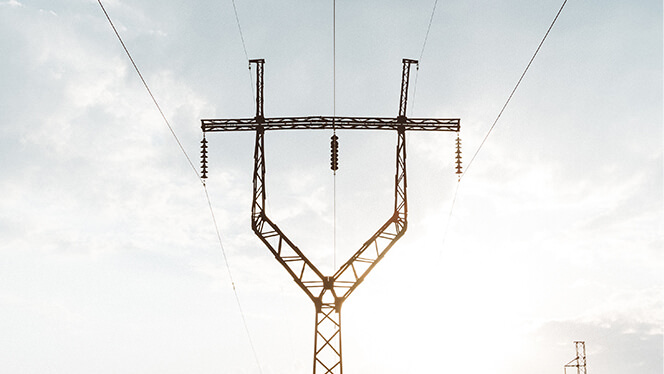
What is the energy crisis?

The energy crisis stems from the foreseeable end of the cycle of oil, gas and coal, which, in addition, have been producing a considerable increase in greenhouse gases (GHG). In recent years, many scientists have raised their voice to warn about climate change, caused notably by the burning of oil and coal in order to produce energy.

Energy crisis causes
Global energy consumption is increasing and we will face a shortage of fossil fuels in the coming decades. Therefore, the availability of reserves is an important source of concern.

Overconsumption
Our current consumption model relies almost entirely on the use of non-renewable energy sources such as oil, gas, coal and uranium. At the current rate of consumption, oil will be the first fossil fuel to run out. According to projections, there would be between 40 and 60 years of proven reserves of conventional oil. Natural gas could be exploited for another 70 years. For coal, there would be around two centuries of reserves.
Overpopulation
These data are to be put into perspective because they are based on current consumption, while it is clear that it will increase considerably. Energy demands are and will be amplified by the demographic - the world’s population should reach nearly 10 billion people in 2050 - and economic boom of growing areas. According to the International Energy Agency (IEA), global energy demand could increase by more than 50% by 2030 in the absence of public policies in this area.
Aging infrastructure
Another reason for energy shortage and scarcity is the poor infrastructure of power generating equipment. Most of energy producing companies keep on using outdated equipments that limits energy production. The need to upgrade the infrastructure and set a high standard of performance is critical.
Energy waste
Mainly coming from the unnecessary use of energy resources, energy waste describes the wastage of energy sources, in particular fuels and electricity. Consequently, the reduction of waste is a colossal source of energy savings, which requires actions both on an individual and collective level.

Energy crisis effects
Environmental
The massive use of traditional energy sources leads - among other things - to the increase of greenhouse gas emissions such as carbon dioxide (CO2), resulting in global warming and harming the environment and biodiversity. Therefore, the energy crisis is closely linked to the environmental crisis.
Economic and socio-political
Energy security is one of the major concerns of the main economic centers of the planet. In fact, energy conditions the possibility of growth, which is essential to the market economy and its development model. The energy crisis could thus have a dramatic impact on the global economy. Besides, when energy markets fail, an energy shortage develops. Energy shortages and resulting economic factors may create socio-political issues.
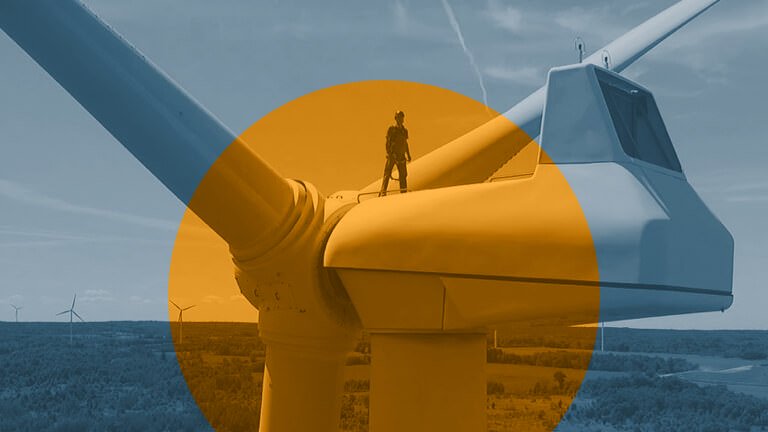
Energy crisis prevention
The good news is that there are ways to reduce the energy crisis :
1. Energy transition to renewable energy sources
Unlike fossil fuels, some energy sources are totally renewable, and do not emit greenhouse gases. These clean and sustainable alternative energy solutions include solar energy , hydropower , wind energy, geothermal energy and biomass energy .
2. Energy efficiency and conservation
In order to prevent an energy crisis, it is also crucial that we consume less energy by improving and modernising energy infrastructure such as smart grid solutions , and smart cities . It is also important that we replace old devices by energy efficient solutions, such as replacing traditional light bulbs by LEDs.

A challenge, #1000 Solutions to change the world

A label focused on both the environment and profitability.
For the first time a label proves the economic profitability of solutions that protect the environment. The Solar Impulse Foundation is selecting 1,000 solutions that protect the environment in a profitable way and awarding them the Solar Impulse Efficient Solutions Label.
Collaborating with independent experts and with renowned institutions, the World Alliance proposes to evaluate its members solutions free of charge. The Solar Impulse Efficient Solutions label will offer a competitive edge to innovators and a guarantee of quality to solution seekers.

A chance to be labelled in the 1000 solutions portfolio
Submit your solution now
- Work & Careers
- Life & Arts
Become an FT subscriber
Limited time offer save up to 40% on standard digital.
- Global news & analysis
- Expert opinion
- Special features
- FirstFT newsletter
- Videos & Podcasts
- Android & iOS app
- FT Edit app
- 10 gift articles per month
Explore more offers.
Standard digital.
- FT Digital Edition
Premium Digital
Print + premium digital.
Then $75 per month. Complete digital access to quality FT journalism on any device. Cancel anytime during your trial.
- 10 additional gift articles per month
- Global news & analysis
- Exclusive FT analysis
- Videos & Podcasts
- FT App on Android & iOS
- Everything in Standard Digital
- Premium newsletters
- Weekday Print Edition
Complete digital access to quality FT journalism with expert analysis from industry leaders. Pay a year upfront and save 20%.
- Everything in Print
- Everything in Premium Digital
The new FT Digital Edition: today’s FT, cover to cover on any device. This subscription does not include access to ft.com or the FT App.
Terms & Conditions apply
Explore our full range of subscriptions.
Why the ft.
See why over a million readers pay to read the Financial Times.
International Edition
Browse Course Material
Course info.
- Prof. Meg Jacobs
Departments
As taught in.
- Fossil Fuels
- American History
- Modern History
- Environmental Policy
- Science and Technology Policy
Learning Resource Types
The energy crisis: past and present, assignments.

Academia.edu no longer supports Internet Explorer.
To browse Academia.edu and the wider internet faster and more securely, please take a few seconds to upgrade your browser .
Enter the email address you signed up with and we'll email you a reset link.
- We're Hiring!
- Help Center

Energy Crisis Assignment

Related Papers
WAGNER BATISTA DE OLIVEIRA
suraj handore
Dr. Harinarayan Tiwari
The budget Unboxer
Renewable Energy and Power Quality Journal
Faisal Hayek
prime patel
Energy is the key input to drive and improve the life cycle. Primarily, it is the gift of the nature to the mankind in various forms. The consumption of the energy is directly proportional to the progress of the mankind. With ever growing population, improvement in the living standard of the humanity, industrialization of the developing countries, the global demand for energy is expected to increase rather significantly in the near future. The primary source of energy is fossil fuel, however the finiteness of fossil fuel reserves and large scale environmental degradation caused by their widespread use, particularly global warming, urban air pollution and acid rain, strongly suggests that harnessing of non-conventional, renewable and environment friendly energy resources is vital for steering the global energy supplies towards a sustainable path. This paper describes in brief the non-conventional energy sources and their usage in India with a case study of Punjab State.
Alok Chandrakar
RELATED PAPERS
Bulletin 109 April
Hans Meltofte , w ekster
Rameshwar Singh Pande
William Lucyshyn
Revista Portuguesa De Cirurgia
Memudu Olatinwo
European Journal of Engineering Research and Science
Awajiogak A Ujile
Revista Scientific
Matha Urquiola
Mohamed Nait Mouloud
Acta Scientiarum. Animal Sciences
Aderbal Marcos de Azevêdo Silva
Thēmis Revista De Derecho
angelo zeta
Tập san Khoa học và kỹ thuật trường Đại học Bình Dương
LILIANA RAMíREZ MORALES
Jurnal Pendidikan Vokasi
Alan Andika Priyatama
Malaria Journal
Ishen Seocharan
Journal of clinical microbiology
Raymond Josephsson
Chemosphere
Lee Ferguson
Natural Gas
Scientific Reports
Journal of the American Chemical Society
Wonyeob Kim
Katja Holmala
Australian Journal of Zoology
Warren Porter
Engineering Structures
Andrei Gudkov
IEEE Transactions on Electron Devices
Bhawani Shankar
See More Documents Like This
- We're Hiring!
- Help Center
- Find new research papers in:
- Health Sciences
- Earth Sciences
- Cognitive Science
- Mathematics
- Computer Science
- Academia ©2024

IMAGES
COMMENTS
Energy crisis. An energy crisis is a society-wide economic problem caused by a constricted supply of energy, leading to diminished availability and increased price to consumers. The energy crisis is the concern that the world's demands on the limited natural resources that are used to power industrial society are diminishing as the demand rises.
We will consider the political, diplomatic, economic, cultural, and technological aspects of the energy crisis. Topics include nuclear power, suburbanization and the new car culture, the environmental movement and the challenges of clean energy, the Middle East and supply of oil, the energy crisis of the 1970s, and global warming. Show less
The energy crisis is an opportunity as well as a challenge. As the clock ticks over into 2023, researchers must deliver answers to protect the green-energy transition. Nature 612 , 627-630 (2022)
Jimmy Carter and the Energy Crisis of the 1970s. Boston, MA: Bedford/St. Martin's, 2004. ISBN: 9780312401221. Farber, David. ... assignment Written Assignments. Download Course. Over 2,500 courses & materials Freely sharing knowledge with learners and educators around the world.
English. World Energy Outlook 2022 shows the global energy crisis can be a historic turning point. Share. Watch on. 7 Ways to Save Energy Amid the Global Energy Crisis. Share. Watch on. Explore analysis, reports, news and events about Global Energy Crisis.
The Energy Crisis: Past and Present. Menu. More Info Syllabus Study Materials ... The purpose of this assignment is to discover your own primary sources on a specific topic related to class discussion. This assignment will help you hone your research skills and enable you to think about the most effective way of presenting your findings ...
March 13, 2013. An acute ongoing energy crisis poses serious threats to Pakistan's feeble economy and national security environment. Michael Kugelman (Woodrow Wilson International Center for Scholars) examines the origins of the country's energy problems, prevailing hurdles to reform, and potential impact of the upcoming general elections.
The current energy crisis began to manifest itself in earnest by late 2007. Although the causes of the crisis are structural, the immediate trigger was the 2007 global commodity price boom, when oil prices almost tripled over an 18-month period.1 The unprecedented fuel inflation was a key factor in the 36% increase in Pakistan's import bill ...
reviewed the current energy crisis and highlighted the huge gap in demand and supply. She noted that after the 18th amendment, low investment had been observed in oil and gas sectors. She discussed high tariff thermal power generation which prevented initiation of new projects with low tariffs on short term basis due to non-availability of ...
Superstorm Sandy caused 8.7 million customers to lose power in 2012. Source: USGCRP, Fourth National Climate Assessment, 2018. Extreme weather and natural disasters pose significant risks to the U.S. energy supply in all regions of the country. 3 Energy systems on both the Gulf and East Coasts face more risk of damage from flooding due to hurricanes and sea level rise. 4 More frequent and ...
This class examines how Americans thought about these questions in the last half-century. We will consider the political, diplomatic, economic, cultural, and technological aspects of the energy crisis. Topics include nuclear power, suburbanization and the new car culture, the environmental movement and the challenges of clean energy, the Middle ...
Energy crisis prevention. The good news is that there are ways to reduce the energy crisis: 1. Energy transition to renewable energy sources. Unlike fossil fuels, some energy sources are totally renewable, and do not emit greenhouse gases. These clean and sustainable alternative energy solutions include solar energy, hydropower, wind energy ...
The analyses will be built on the official goals of the "Russian Energy Strategy Up to 2035".2. The key goals of ES-2035 include: Sustaining Russia's position in global energy markets. Diversifying energy exports towards Asian markets. Ensuring energy availability and affordability for domestic consumers.
The Energy Crisis Situation in 2023. In January 2023, Pakistan experienced a nationwide blackout for almost a day due to a voltage surge at a power station in Sindh. This problem is becoming more common because the aging electricity grid, built before Pakistan's independence in 1947 and mainly in the 1960s, lacks maintenance and investment. ...
Energy Crisis Assignment - Free download as PDF File (.pdf), Text File (.txt) or read online for free. Report
Russia remains a major player in the international energy market — it was a net exporter in 2018 of more than 9m barrels a day of oil and almost 250bn cubic metres of natural gas. But it is ...
The Energy Crisis: Past and Present. Menu. More Info Syllabus Study Materials Assignments Related Resources Assignments. pdf. 25 kB ... assignment Written Assignments. Download Course. Over 2,500 courses & materials Freely sharing knowledge with learners and educators around the world.
Energy Crisis in Pakistan Pakistan has been facing an unprecedented energy crisis since the last few years. The problem becomes more severe during summers. Initially, during the peak crisis there was a power outage of 3-4 hours daily but it keep on increasing as the demand of electricity rises.
Current Transformations. The city's transformations 1 are being shaped by three factors: the vision of the country's leadership, particularly that of Vladimir Putin; the new operating requirements of large industrial and financial corporations; and the state of the country's finances. Severely strained by the economic crisis that followed in the wake of the Soviet Union's collapse, the ...
The Pentagon slammed Russia's barrage of missile strikes across Ukrainian cities and said Moscow's deliberate targeting of energy infrastructure is a war crime. U.S. Defense Secretary Lloyd ...
The Energy Crisis: Past and Present. Menu. More Info Syllabus Study Materials Assignments Related Resources Download. file_download Download ... assignment Written Assignments. Download Course. Over 2,500 courses & materials Freely sharing knowledge with learners and educators around the world.
The Energy Crisis: Past and Present. Menu. More Info Syllabus Study Materials Assignments Related Resources Assignments. Guide to Writing an "A" Paper ... assignment Written Assignments. Download Course. Over 2,500 courses & materials Freely sharing knowledge with learners and educators around the world.